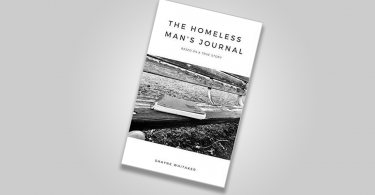Neil Gaiman is, for me, a must-read author. He could release the phone book and I’d probably still buy it. I think the reason for my complete adoration of Gaiman is because he is so versatile; he has written comic books, children’s novels, Doctor Who episodes, short stories and fantasy novels.
Enter Sandman
One of Neil Gaiman’s most celebrated works has to be the The Sandman, a comic book series that ran from 1989 to 1996. Now, I have to admit that I haven’t read The Sandman, but it is definitely on my To Be Read list.
Like many others, I was first introduced to Neil’s writing through his children’s books. The most notable of these are Coraline and The Graveyard Book. Coraline tells the creepy story of a girl enticed into a world that isn’t what it seems. A truly terrifying tale, complete with a button-eyed villain, Coraline is everything you’d want in a scary kids book. The Graveyard Book is a re-imagining of Kipling’s The Jungle Book, set in, you guessed it – a graveyard. Again, Neil’s imaginative storytelling is rife; the characters are complex and mysterious, the story is engaging and the writing is marvellous. As a kid, these books ranked alongside Harry Potter and Roald Dahl as some of my favourites; books that I would read and re-read again and again.
More recently, Neil released Fortunately the Milk, a story that is aimed at slightly younger children than Coraline and The Graveyard Book. Fortunately the Milk is a funny, adventurous romp through time and space that is just as imaginative as Neil’s earlier children’s books, but without the scary edge.
Growing up with Gaiman
As I got a bit older, I started to move on to Neil’s adult books. The first novel Neil released was in collaboration with another of my favourite authors, Terry Pratchett. Good Omens is a light-hearted apocalypse novel, punctuated by Prachett’s trademark wit. Featuring prophecies, the son of Satan and the four horseman of the apocalypse, it is a sharp and funny look at what would happen when the earth ends.
Neverwhere, the novelisation of a TV series that Neil wrote, was his second novel. Neverwhere is probably one of my favourite Gaiman books, and I read it on the tube in London, which is pretty apt considering the plot! Richard Mayhew, our main character, is an ordinary London businessman who rescues a girl one evening. This rescue leads him into the world of London Below, a place of magic and mystery. Featuring many London trademarks, this is such a great book to read whilst perusing the capital.
The next book Neil released was Stardust, a magical Victorian-style fairy tale. I know I’ve just said that Neverwhere was one of my favourite books, but Stardust is just extraordinary. The fairy world is so richly imagined and it reads like a classic epic from hundreds of years ago. Stardust has been made into a film, which in my opinion isn’t as good as the original, but it is a great compliment to Neil’s world building and writing.
American Gods
Perhaps the most famous book Neil has written is American Gods, a sprawling epic about religion and gods. I read American Gods a few years ago, and I have to say it isn’t one of my favourite Gaiman novels. However, all the classic staples of Neil’s writing are still there: imagination, a compelling plot, and magic. American Gods is, for me, still a must-read and an epic journey into mythology. I am yet to read its companion novel, Anansi Boys, but I hear it’s just as sharp and witty as American Gods.
Neil’s latest offering is The Ocean at the End of the Lane, which was released in 2013. This book holds a special place in my heart, mainly because I went to see Neil speak about it and because I have a signed copy (!!!). The Ocean at the End of the Lane is narrated by a child, but it isn’t a kids book. Neil effortlessly weaves the mythology into the story and creates a story and a villain that is tinged with nostalgia.

Neil is also a prolific short story writer, with M is for Magic and Trigger Warning being just some of the collections he has written. These books are a great way to dip your toes into Neil’s writing style before you attempt his novels. Neil has also written two episodes for Doctor Who, ‘The Doctor’s Wife’ and ‘Nightmare in Silver’. These episodes are standout, and showcase the talents of a massive Doctor fan and an amazing writer. In particular ‘The Doctor’s Wife’ reimagines Doctor Who mythology, bringing a fresh twist to the TARDIS.
In short, Neil Gaiman is an exceedingly talented author who specialises in fantastical magic and spine-tingling horror. There is definitely a Neil Gaiman book for everyone, and hopefully this guide to his work has given you an idea of where to start.
What’s your favourite Neil Gaiman book? Let us know in the comments below!








